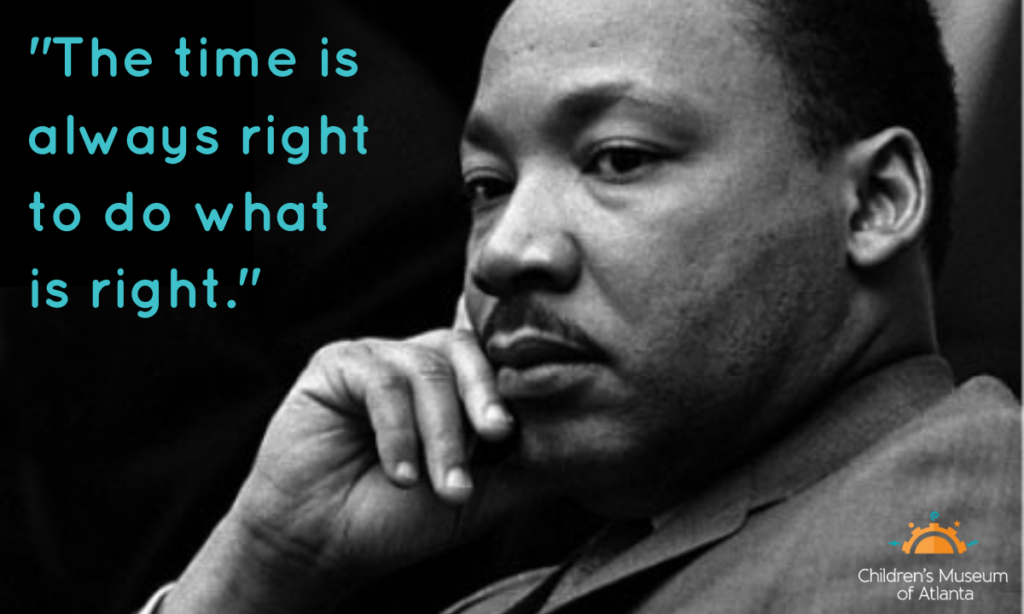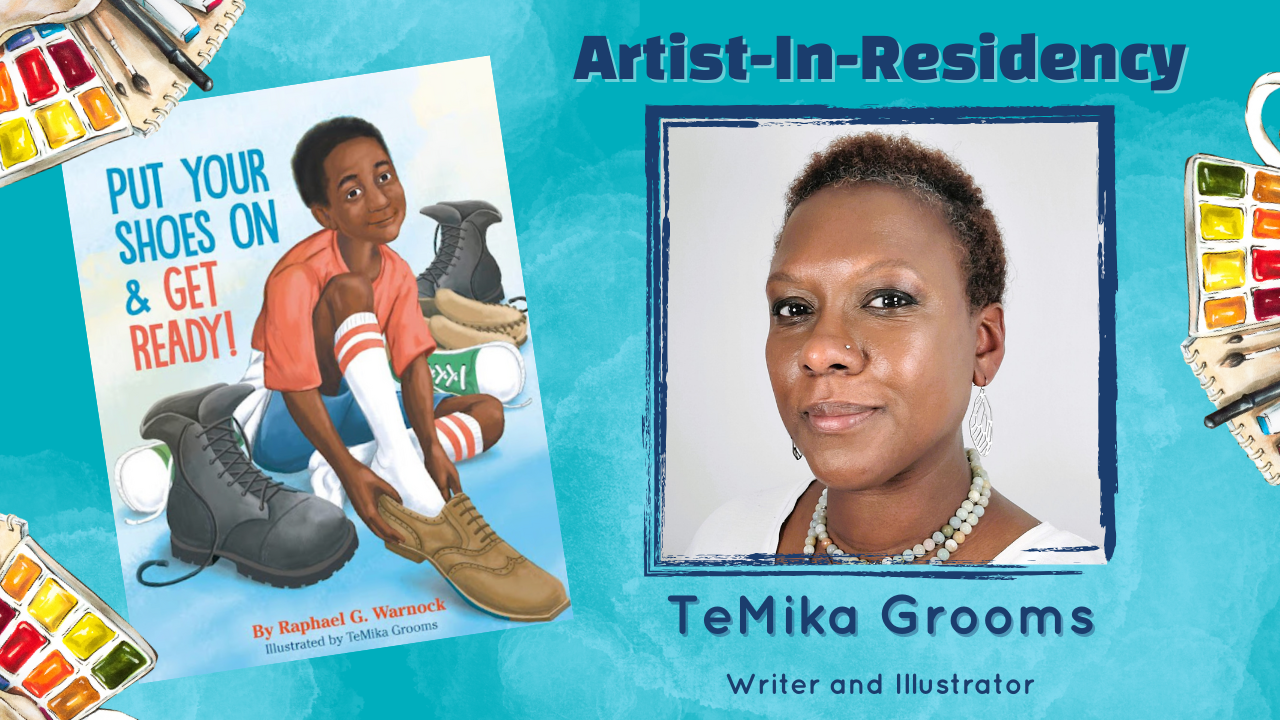Happy Dr. Martin Luther King Jr. Day!

Today is Dr. Martin Luther King Jr. Day! Every year on the third Monday in January the country honors and celebrates Dr. King’s life. This year the Museum’s theme is “Dreams For a Better World” inspired by Dr. King’s famous speech and his vision for the future.
You may have heard Dr. King’s “I Have a Dream Speech”. In it, Dr. King talks about his dream for the United States.
What was Dr. King’s dream?
Dr. King said, “I have a dream that one day this nation will rise up and live out the true meaning of its creed: ‘We hold these truths to be self-evident, that all men are created equal.’ . . . I have a dream that my four little children will one day live in a nation where they will not be judged by the color of their skin but by the content of their character. I have a dream today.”
Let’s break down what Dr. King was saying!
“I have a dream that one day this nation will rise up and live out the true meaning of its creed: ‘We hold these truths to be self-evident, that all men are created equal.'”
In the first part of the sentence, Dr. King said his dream is that one day the US will live up to its “creed” or beliefs and values. In the second part of the sentence, Dr. King reminded us what that belief is by quoting a part of the Declaration of Independence. Here Dr. King was saying that the original dream for the United States of America is a beautiful one – a country where everyone is treated equally – but that we haven’t reached that dream yet.
“I have a dream that my four little children will one day live in a nation where they will not be judged by the color of their skin but by the content of their character.”
Dr. King added more details to his dream of a country where everyone is treated equally by saying he dreamed that one day his children wouldn’t be judged by the color of their skin. Judging someone – deciding how smart, kind or good someone is – by the color of their skin is racism. Dr. King’s dream was that his children and all black children would be judged on their actions and choices, not on their skin color. Dr. King’s dream was a world without racism.
The beautiful, wonderful thing about Dr. King’s dream was that he didn’t just dream about it he also worked hard to make it happen! Dr. King studied, wrote, learned from others, made plans, and took action with his community to push his country closer to his dream. He worked toward his dream! And that work made a difference.
Dr. King studied at Morehouse College here in Atlanta! He took classes in medicine, law, and ministry. He learned from mentors like Morehouse College president Benjamin Mays. After he graduated from Morehouse, Dr. King kept studying at Croze Theological Seminary and then Boston University where he studied ministry, ethics, theology, and philosophy. Dr. King wanted to understand what it meant to be good and do good and how to care for others.

Dr. King then worked as a pastor in Montgomery, Alabama. There he worked with Rosa Parks, E. D. Nixon, his congregation, and others to desegregate the public buses. He worked with others, made a plan, and they stuck to it until they won in 1956!
In 1957, Dr. King, Ralph Abernathy, Fred Shuttlesworth, Joseph Lowery, and other civil rights activists founded the Southern Christian Leadership Conference (SCLC). Together they wanted to continue to fight for civil rights for black people across the United States by organizing protests.
Other civil rights leaders involved in the SCLC with King included: James Bevel, Allen Johnson, Curtis W. Harris, Walter E. Fauntroy, C. T. Vivian, Andrew Young, The Freedom Singers, Cleveland Robinson, Randolph Blackwell, Annie Bell Robinson Devine, Charles Kenzie Steele, Alfred Daniel Williams King, Benjamin Hooks, Aaron Henry, and Bayard Rustin.
An important part of making a dream come true is finding a team of people who also believe in the dream and who can work together to make it happen.

While organizing with the SCLC and supporting the civil rights efforts of many other organizations, including the Atlanta Student Movement, Dr. King also wrote six books, hundreds of sermons, dozens of speeches, and many letters to help others understand the need for equal civil rights in the USA and explaining how he thought his dream could be achieved. Sharing the dream was an important part of making it come true.
Many of the rights that Dr. King and his community fought for were won with the passage of the Civil Rights Act of 1964 and the 1965 Voting Rights Act. Through many years of very hard work, Dr. King was able to push the country towards his dream of a United State where no one is judged or treated unfairly because of the color of their skin.
Dr. King’s incredible dream lives on today. It is up to all of us to follow his example and continue putting in the hard work to make it a reality.


